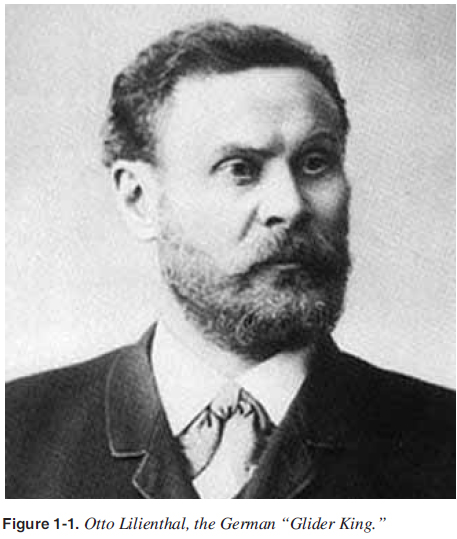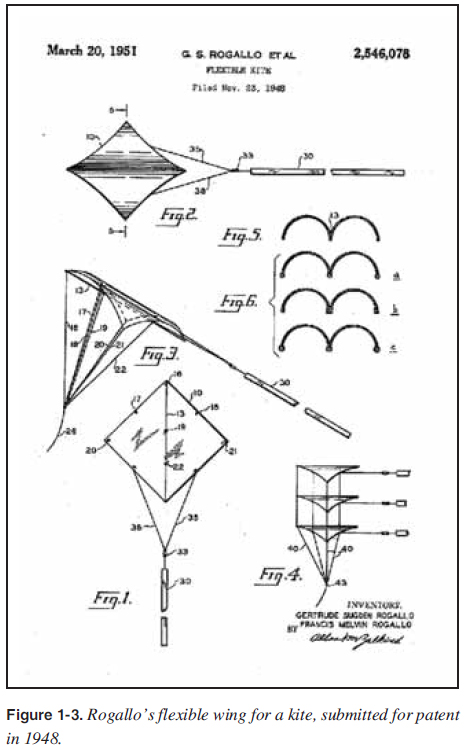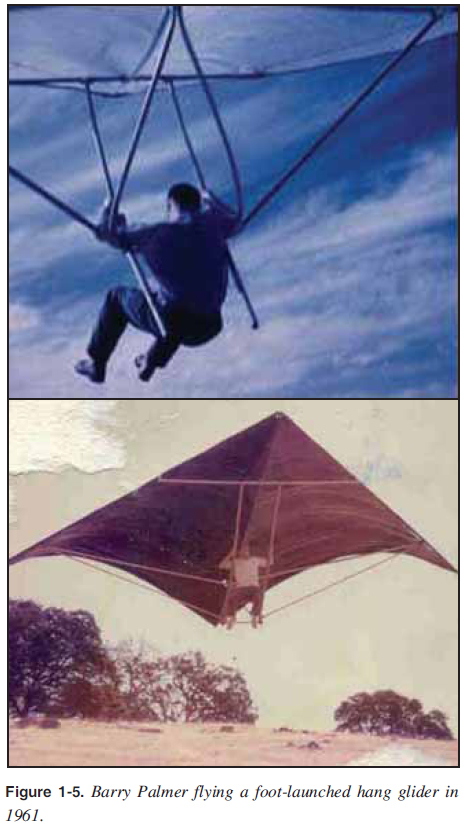
 |
|
||
CHAPTER 1. Introduction To Weight-Shift Control History From the beginning of mankind, we have looked to the skies where legends and myths have entertained and provided us the dream to fl y. Through the middle ages, the idea of fl ight evolved across Europe, with Leonardo Da Vinci well known for designing fl ying machines to carry humans. In 1874, Otto Lilienthal, a German mechanical engineer, started designing, building, and flying bird-like wings. [Figure 1-1] He published his work in 1889, and by 1891 made fl ights of over 100 feet in distance. Otto was the fi rst successful hang glider pilot to design, build, and fl y a number of wing designs. [Figure 1-2]   In 1903, the Wright brothers’ gliders became powered and the airplane was born as the Wright Flyer. In the early 1900s, aircraft confi gurations evolved as faster speeds and heavier loads were placed on aircraft in fl ight. As a result of the new demands, the simple fl exible wing was no longer suffi cient and aircraft designers began to incorporate rigid wings with mechanical aerodynamic controls. These new ideas in wing design eventually resulted in the familiar aileron and rudder confi gurations found on the modern airplane. Commercial applications were driving the need for faster and heavier aircraft; however, the dream of achieving manned powered fl ight in its most bird-like form was evolving along a different path. As rigid wing design enjoyed development for military and commercial applications, the fl exible wing concept lay largely dormant for decades. In 1948, a fl exible wing design was created by Francis Melvin Rogallo as a fl ying toy kit for which he obtained a patent in 1951. [Figure 1-3]  Rogallo’s design concept evolved down two parallel paths in the early 1960s, military and sport fl ight. The military application was the National Aeronautics and Space Administration (NASA) development of the Rogallo wing into the Paresev (Paraglider Research Vehicle) later renamed the Parawing. That aircraft had rigid leading edges shown in Figure 1-4. NASA had the cart attached to the keel hanging below the wing and using weight shift to control the wing in the same fashion as modern WSC aircraft today.  During this same period, other pioneering engineers and enthusiasts started developing the Rogallo wing for sport. One was aeronautical engineer, Barry Palmer, who saw pictures of the NASA wings and, in 1961, constructed and fl ew a number of hang gliders based on the Rogallo design. [Figure 1-5] His efforts and others evolved to the WSC aircraft in the late 1960s. Another pioneer was John Dickenson of Australia who used the NASA Rogallo wing design but incorporated a triangular control bar that provided structure for the wing during fl ight with fl ying wires. [Figure 1-6]   |
| ŠAvStop Online Magazine Contact Us Return To Books |